If you're looking for ways to soundproof a basement room, you've come to the right place.
In this blog post, we'll discuss 89 simple, inexpensive, and effective solutions for soundproofing a basement room.
Whether you're trying to get some peace and quiet from noisy neighbors or reduce the sound of your own activities, these soundproofing techniques are sure to help.
Read on to learn more about how to effectively soundproof a basement room on a budget.
Recommended reading:Soundproof A Baby Room
1Benefits of Soundproofing Your Basement Room

Soundproofing your basement room can have a plethora of benefits, both for your home and yourself.
- One of the main advantages of soundproofing your basement is improved home value. When you soundproof your basement, it makes it more attractive to potential buyers, as soundproofing can block out noises from outside and other rooms in the house. This can make your home more desirable, thus increasing its value.
- Another benefit of soundproofing a basement is reduced stress levels. Unwanted noise can be distracting and irritating, leading to elevated stress levels. Soundproofing your basement can block out this noise, allowing for a calmer environment and lower stress levels.
- In addition, soundproofing your basement can improve sleep quality. If your basement is full of noises like those coming from traffic or other rooms in the house, it can be difficult to get a good night’s sleep.
- Soundproofing can reduce this noise, leading to better quality sleep. Also, soundproofing your basement can reduce noise pollution. Noise pollution can be extremely disruptive, especially if you live in a busy area or near a busy road. Soundproofing your basement can reduce the amount of noise that gets into your home, thus reducing noise pollution.
- Finally, soundproofing your basement can improve concentration. When you are trying to concentrate on something important, the last thing you want is background noise distracting you.
By soundproofing your basement, you can keep unwanted noise out of the room, allowing for better focus.
The International Building Code (IBC) is the foundational document in a group of building codes known as the Family of International Codes.
It is the essential tool for preserving public health and safety, providing safeguards against hazards in our built environment.
It addresses the design and installation of innovative materials that meet public health and safety goals.
Overall, soundproofing your basement room can provide many benefits for both you and your home.
It can increase home value, reduce stress levels, improve sleep quality, reduce noise pollution, and improve concentration.
2These are the Areas to Soundproof in Your Basement
When it comes to soundproofing your basement, it’s important to address all areas that are potential sources of noise.
To effectively soundproof your basement, you must ensure the walls, ceiling, floors, doors, windows, and electrical outlets are all addressed.
1. The walls of the basement are perhaps the most important area to address when it comes to soundproofing.
You’ll need to make sure the walls have a high STC rating, as this is a measure of how well sound is blocked from entering or leaving the space.
2. When it comes to the ceiling, you’ll need to make sure that it is properly sealed and insulated in order to prevent any sound from traveling through the floor joists into the basement.
3. The floor is another important area to soundproof, especially if you’re using the basement for music or home theater use.
The best way to soundproof the floor is to install carpet padding and use either acoustic tiles or a product like underlayment to reduce vibrations.
4. Doors should also be addressed when it comes to soundproofing your basement.
You can install a solid-core door with weather stripping on the frame, which will help reduce the transfer of noise.
Additionally, you can install a door sweep or threshold seal to help reduce noise transfer even further.
5. Windows are also an important area to consider when soundproofing your basement. You can add window inserts or double-pane windows that have an acoustic rating.
This will help reduce the noise that enters or leaves the basement.
6. Finally, electrical outlets should be addressed in order to minimize sound transfer through them. You can install foam gaskets between the wall plates and outlets to reduce the transfer of noise.
Additionally, you can also install acoustic sealant around any wiring that passes through the walls or ceilings of the basement.
By addressing all these areas of your basement, you can ensure that your basement is effectively soundproofed and noise is minimized.
Recommended reading:Occupational Safety and Health Administration

Pro Tip
Before Starting your Project, you need to know something
The most important thing to do before starting your soundproofing project is to plan ahead and map out your basement.
Knowing exactly what areas you want to soundproof and how you want to approach each area will help save you time and money in the long run.
First, identify what kind of noise you’re trying to block. Is it coming from outside or inside the house?
Make sure to consider any sounds that could come from doors or windows, as well as sound coming through vents and ductwork.
Once you have identified all potential sources of noise, you can start mapping out your basement.
Measure the size of each wall, ceiling, and floor area that you plan to soundproof. This will help you determine how much material you will need for each section.
Once you have a clear plan in place, you’re ready to start your project.
Make sure to follow the instructions for each material carefully, and take necessary precautions such as wearing protective clothing and using breathing masks when working with hazardous materials like fiberglass insulation.
With the right preparation and materials, you’ll soon be enjoying a quieter space in your home.
3How to Soundproof Your Basement Room
Basements are the perfect place to have a little bit of privacy and quiet. But one thing they're not so great at hiding is sound.
If you're looking to soundproof your basement room, there are a few steps you can take to help ensure that you get the level of privacy and silence you want for your home.
Step 3.1:Start with the Ceiling
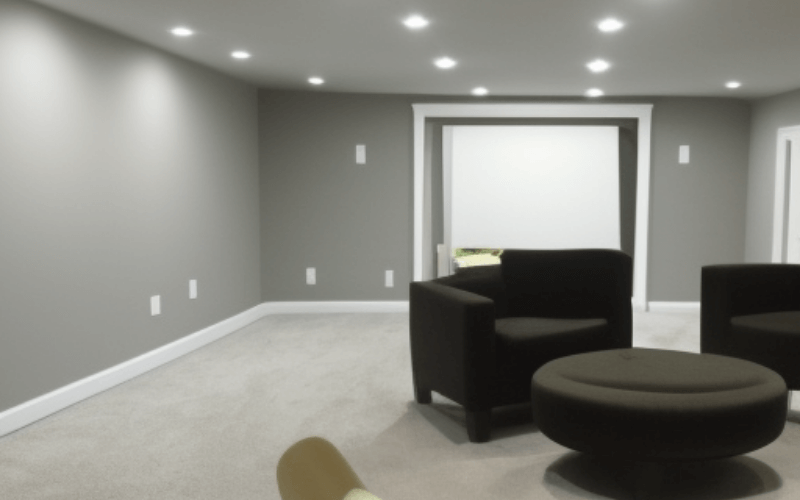
Here are some elements of soundproofing a basement ceiling that you should keep in mind when you’re considering soundproofing a basement ceiling:
- Decoupling: Decoupling is the process of separating mechanical elements from the structure. For example, if you have a door that squeaks when it opens and closes, you can use special tapes to decouple the frame from the rest of the door so that it doesn’t touch any other part of the door when opening or closing.
- Adding Mass: Another way to soundproof a basement ceiling is to add mass. This can be done by adding additional material between the joists, such as drywall or plywood.
- Standard Drywall: Standard drywall is the most common type of material used to soundproof a basement ceiling. It’s made from gypsum plaster and is very effective at blocking sound because it has a high mass and density. You can also add additional layers of drywall to increase its effectiveness.
- Soundproof Drywall: Soundproof drywall is an advanced version of standard drywall that’s designed to reduce sound even more. It has an extra layer of material between two sheets of gypsum plaster and is often used in recording studios, for example.
- Absorption: You can also add absorption material to your basement ceiling to reduce the amount of sound that’s reflected back into the room. This is especially useful if you have a high-traffic area like a family room or game room where noise from above can be heard clearly.
- Damping Materials: Damping materials work by absorbing sound waves and slowing them down. They’re often used in recording studios, but you can also add them to your basement ceiling to reduce noise from above.
- Acoustic Caulk: Acoustic caulk is a rubberized sealant that can be used on basement ceilings, walls and even floors. The sealant works by absorbing sound waves and reducing any echoes that may occur in your room. It can also be used as an alternative to soundproofing foam, which is often more expensive.
- Acoustic Insulation: Acoustic insulation works by providing a barrier between two rooms. It’s often used in walls and ceilings, but you can also use it on the floor to prevent sound from passing through. Acoustic insulation is made from foam or fiberglass and comes in sheets that can be cut to size for any project.
- Mineral Wool: Mineral wool is another option for acoustic insulation. It’s made from either rock or slag wool, which is then processed into a type of fiber that can be used in construction projects. Mineral wool is often used as an alternative to fiberglass because it offers better soundproofing and fire resistance.
- Fiberglass: Fiberglass is a popular option for acoustic insulation. It’s made from glass fibers that are formed into sheets, blocks or tubes and then used in construction projects. You can also find fiberglass in pipes and other materials used to insulate pipes.
- Foam Boards: Foam boards are another option for acoustic insulation. They’re made from a variety of materials and can be used as an alternative to fiberglass or mineral wool. The most common foam board is polystyrene, which is a petroleum-based product that’s often used in packaging.
- Sound Isolation Clips: Sound isolation clips are another option for acoustic insulation. These clips are placed between two surfaces to prevent sound from traveling through an opening. They’re often made from rubber or silicone, which makes them ideal for use in applications where vibration isolation is also necessary.
Some another Soundproofing Options for Basement Ceilings
- Hanging Acoustic Panels: Hanging acoustic panels in your basement ceiling can be a great way to reduce sound transmission. These panels are made from materials like foam or mineral wool, and they’re usually covered in fabric or vinyl. They can be easily installed on any flat surface by simply hooking them over joists or studs.
- Wood and Fabric Panels: Wood and fabric panels are another option for soundproofing your basement ceiling. These acoustic materials are available in a wide range of styles and sizes, so you can easily find one that’s right for your space. They tend to be more expensive than other options, but they provide excellent noise reduction.
- Mass Loaded Vinyl: Mass loaded vinyl is another option for soundproofing your basement. It’s made from polyester fibers and bonded with cement, which makes it more durable than other acoustic materials. Mass loaded vinyl panels are easy to install and provide excellent sound absorption.
- Acoustic Sound Foam: Acoustic foam is a popular soundproofing solution for many homeowners. It’s made from polyurethane, which makes it durable and long-lasting. This material can be purchased in an assortment of thicknesses for different applications.
- Use Soundproof Paint: Acoustic paint is another option for soundproofing your basement. It’s made from a mixture of chemicals and water-based resin, which makes it easier to apply than other materials. Some paints are designed specifically for damp environments, so they won’t dry out and crack over time.
Recommended reading:Improve basement Attic Insulation
Step 3.2:Soundproof a Basement Room Door
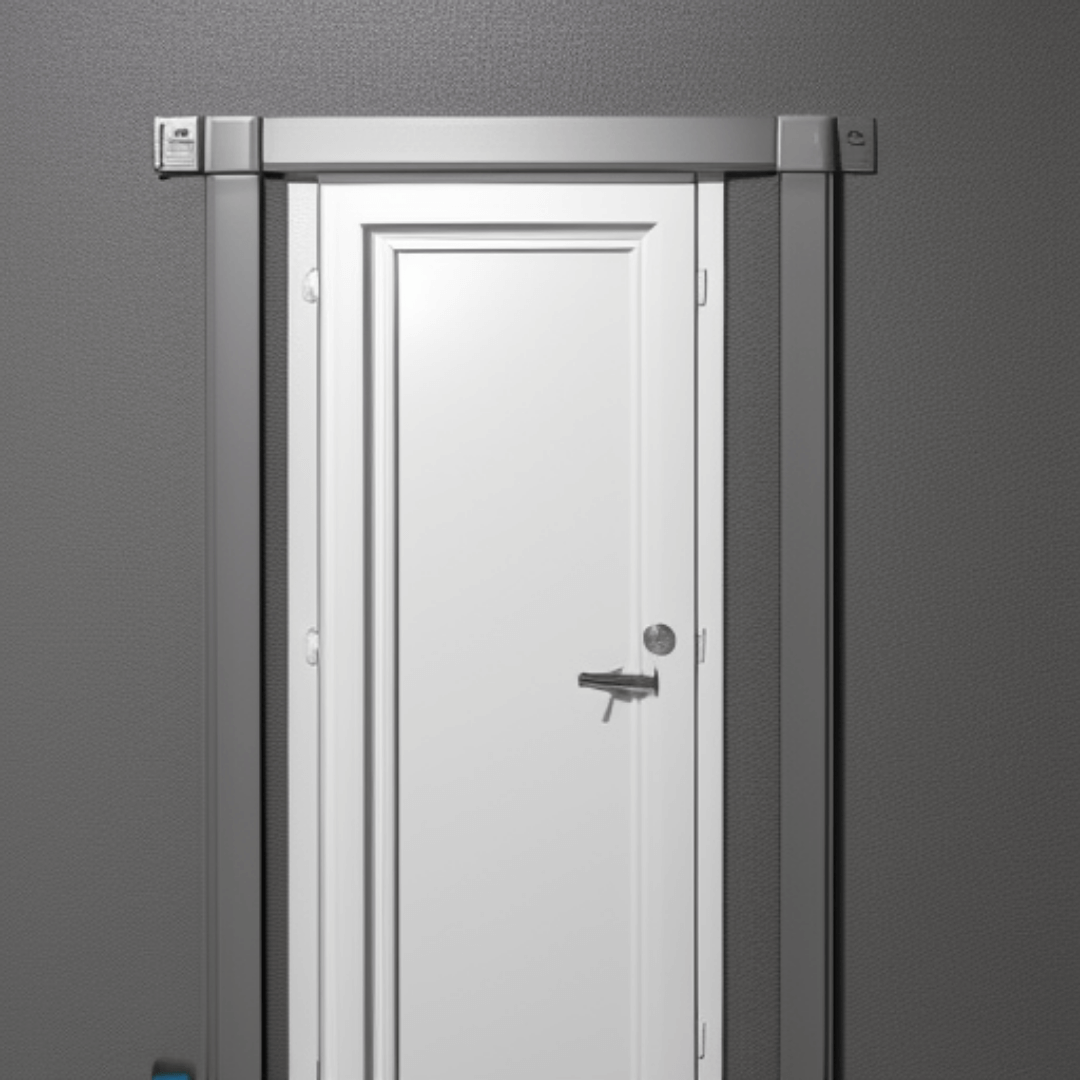
How to Soundproof a Basement Room Door A basement door is often one of the loudest parts of your home, especially if you have an older home. It can be annoying to listen to people walking back and forth above you as they go about their day-to-day activities.
Here are some elements of soundproofing a basement room door that can help to reduce noise and make your space more enjoyable.
- Add Soundproofing Rubber: This is a cheap and easy way to soundproof a basement room door. You can purchase rubber sheets and cut them to the size of your door, then put them on top of each side. If you have extra layers of wood or metal in your door, use duct tape to secure the rubber sheets on top of these materials.
- Add Weatherstripping: This is another cheap and easy way to soundproof a basement room door. You can purchase weatherstripping for doors at any home improvement store. It comes in different sizes, so make sure you get the right one for your door.
- Add An Automatic Door Sweep or Place a door sweep when it’s closed: An automatic door sweep or a simple door sweep can help keep sound out of your room. A door sweep is a rubber or foam strip that goes around the edge of the doorway and fits tightly against it. It will prevent air leaks and keep sound in or out of your room.
- Add acoustic panels to the door's surface: If you have a door that’s not thick enough to help block sound, try using acoustic panels. These are thin sheets of material that will absorb sound waves and reduce noise levels in your room. You can install them on the inside or outside of your door for best results.
- Install an MLV Sound Barrier: An MLV Sound Barrier can be used to help reduce sound. It’s a layer of material that goes between the studs in your walls and acts like an energy absorber, reducing sound levels by up to 30%. However, it’s important to make sure the material is installed properly so it doesn’t fall out or create gaps which will allow sound through.
- Add Door Thresholds: A door threshold is a small piece of wood that sits at the bottom of your door and helps to block out noise. They can be made of various materials, including hardwood or composite. If you’re looking for something more durable and long-lasting, consider installing a metal threshold instead.
- Use Mass-loaded Vinyl Panels: Mass-loaded vinyl panels are a great option if you want to reduce the amount of sound that gets through your walls. They’re made from high-density foam, which helps to absorb sound waves before they can reach your ears.
- Increase the mass of the door: Increasing the mass of the door is a good way to reduce the amount of sound that gets through, as heavier doors are harder to push open. This can be done by replacing your current door with one made from solid wood or metal.
- Use a door gasket to stop drafts and leaks: Placing a door gasket on your door is an easy way to reduce the amount of sound that gets through. A door gasket is a flexible strip of rubber or foam that fits between the frame and the door, creating a seal that reduces noise transfer.
- Use gap foam: Gap foam is another option that you can use to reduce the amount of sound that gets through. It’s a special type of foam that goes over the gaps between your door and frame, helping to make a tighter seal.
- Place a soundproof blanket over the door: Putting a soundproof blanket over your door is another way to reduce noise transfer. This can be especially helpful if you have thin walls or live in an apartment complex where noise travels easily. - Replace the hinges: If you’ve tried everything else and still can’t get the amount of noise through the door to a level that works for you, replacing your current hinges with ones made from solid wood or metal may be your best bet.
- Install a solid core door: A solid core door is made from one piece of wood, and the gaps between the panels are filled in with foam. This helps to reduce noise transfer through the door by eliminating air gaps that allow sound waves to travel freely.
- Install soundproofing composite material: If you want to go all out, soundproofing composite material can be applied to the interior of your door. This will help reduce noise transfer through the door by absorbing sound waves and turning them into heat.
- Place a fiberboard over your door: If you’re looking for a quick and easy solution, fiberboard can help. It provides an extra layer of insulation between the interior and exterior of your home, which helps to reduce noise transfer through the door by blocking sound waves from traveling freely through air gaps.
- Purchase a soundproofing kit: If you want something that’s easier to install, a soundproofing kit is a good option. These kits are available for most types of doors, and they can help reduce the amount of noise that travels through the door by absorbing sound waves and turning them into heat.
- Meeting stiles for double doors: If you’re looking for a sturdier option, you can install meeting stiles on your double doors. These will keep the two doors from touching each other as they open and close, which helps to reduce sound transfer through the door by creating a barrier between them.
- Make use of dense, heavy foam tiles: If this is an option for you, dense, heavy mass foam tiles are a good choice. They’re available in different thicknesses and densities, and the thicker ones will help to better absorb sound waves than thinner ones.
Step 3.3:Soundproof a Basement Room Floors
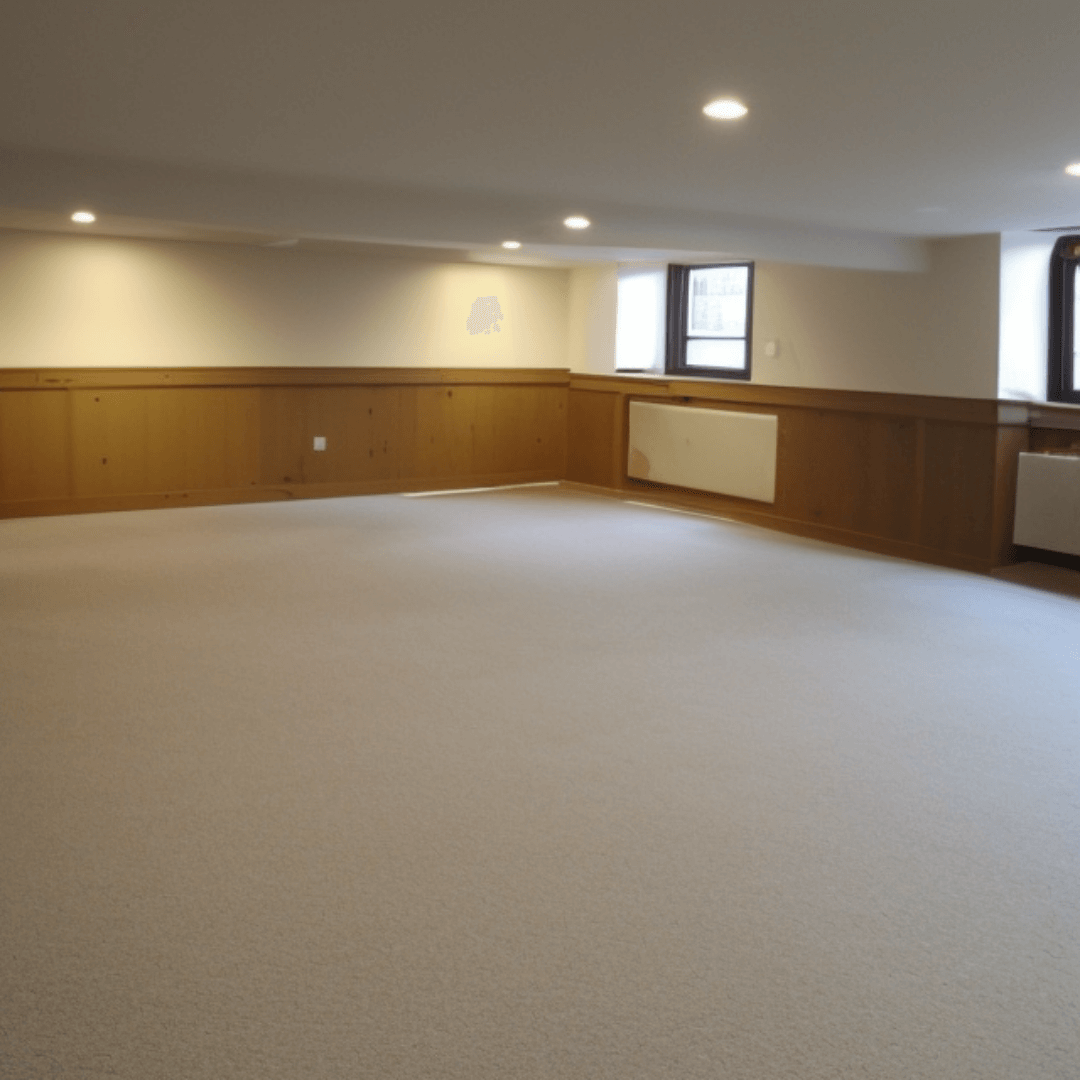
How to Soundproof a basement room floor Basement rooms are often the most neglected when it comes to soundproofing. It’s not because they’re unimportant, but simply because they have other more pressing issues. However, there are some things you can do to make your basement room a bit quieter and more pleasant.
Recommended reading:Soundproof A Floor Cheaply
Here are some elements of soundproofing a basement room floors
- Use Interlocking Floor Mats: Interlocking floor mats are a great way to soundproof a basement room. They’re easy to install, they don’t cost very much, and they can be removed if you ever want to change the design of your room. Using these mats is especially effective if you have an unfinished basement with concrete floors.
- Use Carpet Padding: Carpet padding is another great way to soundproof a basement room. It’s easy to install, and it can be removed if you ever want to change the design of your room. If you have an unfinished basement with concrete floors, consider using carpet padding instead of interlocking floor mats.
- Add Noise Proofing Compound: If you have an unfinished basement with concrete floors, consider adding a layer of noise-proofing compound between the floor and ceiling. This is especially effective if you plan on installing hardwood floors.
- Insert Deck Screws: If you have an unfinished basement with concrete floors, consider using deck screws instead of nails. They’re much quieter than nails, and they won’t drive as far into the wood.
- Install Additional Flooring: For a more quiet basement, carpet or linoleum can be installed over concrete floors.
- Use Rubber Floor Mats: Rubber floor mats are also effective at reducing noise and vibration. They’re especially useful if you have a basement that is frequently used by children or pets.
- Hardwood Floors: Hardwood floors are generally quieter than carpets, and they’re easier to clean. If you have a basement that’s frequently used by children or pets, this may be the best option for you.
- Laminate or Engineered Flooring: Engineered wood floors are a popular choice for basements because they are resistant to moisture and can be installed over concrete floors. Laminate flooring is also a good option if you need to cover large areas of concrete or stone.
- Ceramic Tiles and Stone: Ceramic tiles and stone are ideal for basement floors because they’re waterproof, durable, and easy to clean. They also make a great choice if you want a stylish look that is similar to those found in upscale homes.
- Put a Rug Underlay Under the Carpet: If you have a rug that you don’t want to put on the floor, try placing an underlay beneath it. This will give your rug a comfortable place to sit while also protecting your basement floor from moisture and dirt.
- Construct a New Layer of Flooring on Top of the Existing One: If your basement is finished, you can install another layer of flooring on top of the existing one. This will provide a new layer of protection for your basement and can also help to improve its overall appearance.
- Install Soundproof Floor Underlayment: Installing soundproof floor underlayment is another way to ensure that your basement is as quiet as possible. This will help to reduce the amount of noise that comes through from the outside and make your home feel more like a sanctuary than ever before.
- Put MLV Under the Floorboards: Another great way to reduce the amount of sound that comes through your basement is by installing a layer of moisture-resistant underlayment (MLV) beneath your floorboards. This will help prevent any moisture from getting into the subflooring and causing damage.
- Add Soundproof Floor Insulation: Another great way to make your basement as quiet as possible is by adding soundproof floor insulation. This will help reduce the amount of noise that comes through from above and below, making your home feel more like a sanctuary than ever before.
- Use Floor Joist Isolators: Floor joist isolators are another great way to reduce the amount of sound that comes from your basement. These will help prevent any vibration from traveling through the flooring, making it feel much more comfortable and secure.
- Use the Plywood and Green Glue Technique: If you have a concrete basement floor, then you can use the plywood and green glue technique to reduce the amount of noise that comes through from above. This will help reduce the amount of sound that comes down through the flooring and into your home, making it feel much more comfortable than ever before.

Pro Tip
Soundproofing a floor is made easier with the help of these DIY techniques.
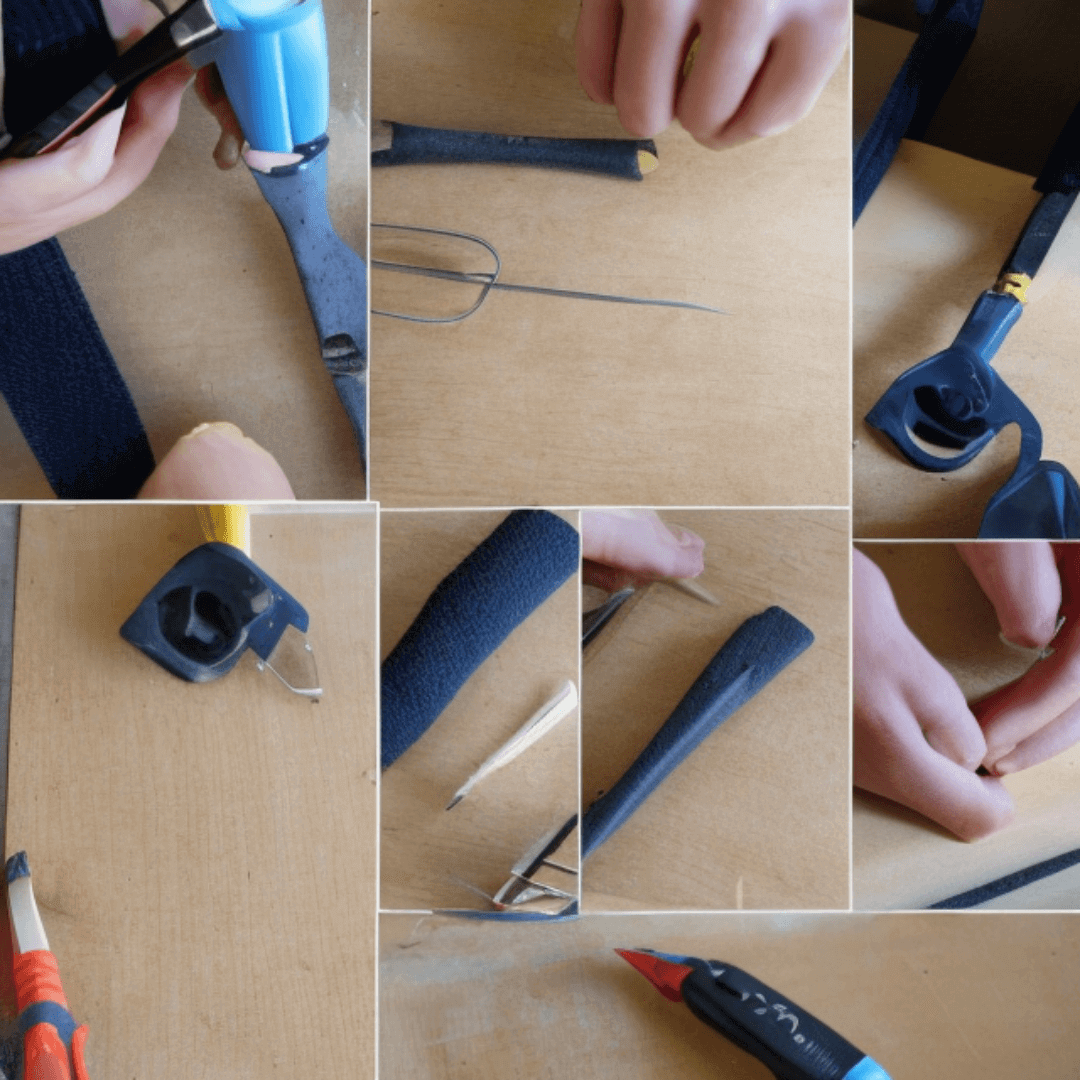
Interlocking Floor Mats: Floor mats are a great way to soundproof your floor, but they have a couple of disadvantages. First, they can be difficult to install. Second, they take up more space than other options.
Acoustic Floor Underlayment: Floor underlayment is a great way to soundproof your floor. It can be installed over most types of subflooring and provides superior results when compared to other options.
Sound-absorbing Carpet Pad: Carpet pads are another good way to soundproof your floor, but they’re not as effective as other options. They provide some sound absorption but not as much as other techniques.
Glue and Other Soundproofing Compounds: If you really want to soundproof your floor, you need to use a high-quality product. Glue alone won’t be enough; it needs to be applied over a layer of foam or other soundproofing compound.
Step 3.4:Soundproof a Basement Room Walls
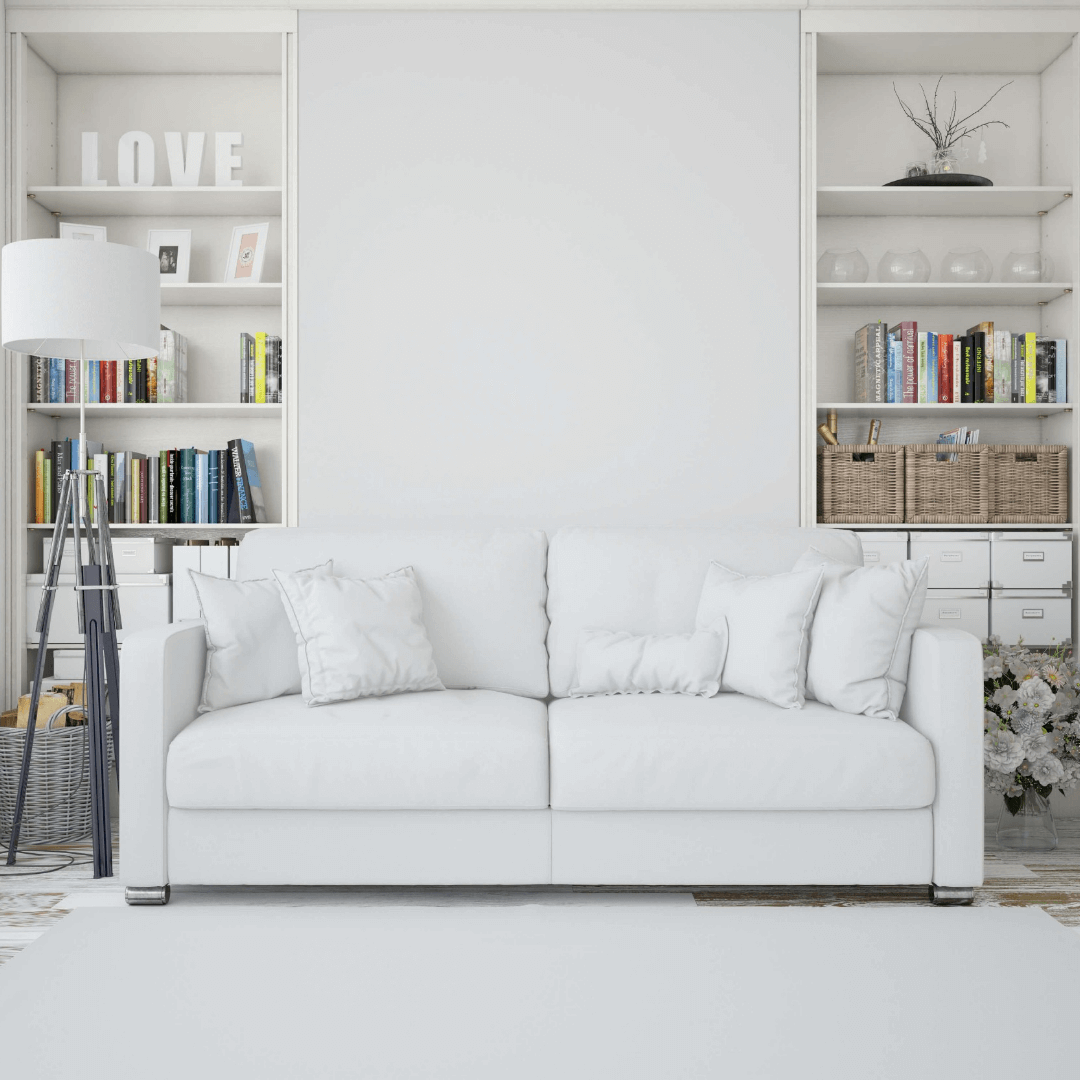
How to Soundproof Basement Room Walls Basement rooms can be damp, cold and hard to heat. But even if your basement is dry, cold and well-heated, it still may not be as quiet as you would like. That’s because sound travels easily through hard surfaces such as concrete or brick walls.
Here are some elements of soundproofing a basement room walls
- Adding Mass-Loaded Vinyl: Mass-loaded vinyl is a material designed to make rooms quieter. You can install it on the walls of your basement room, or even on the ceiling. It’s also available in a variety of colors and patterns that will match your existing decor
- Recycled Cotton Batts: Cotton batt insulation is made from recycled cotton fibers, which makes it an ideal choice for soundproofing. It’s also lightweight and easy to install.
- Sound Isolated Systems: These can be used in conjunction with other materials such as mass-loaded vinyl and recycled cotton batts. They are used to reduce the transmission of sound through a building's structural elements, such as joists, rafters and studs.
- Staggered Stud Walls: These are walls that have their studs placed at different heights. This will help to reduce sound transmission through the walls, but it can be difficult to install and adds unwanted visual clutter.
- Double Walls: This is a common method of soundproofing a basement room. It involves building two walls, with one being an inch or two away from the other. This can help to reduce sound transmission through the wall by 50% or more.
- Resilient Channel System: This is a resilient channel system that can be installed between the studs of your walls. This will help to reduce sound transmission by up to 25%.
- Fiberglass Batts: This is a standard method of soundproofing a basement room. It involves installing fiberglass batts between the studs of your walls. This will help to reduce sound transmission by up to 25%.
- Expanded Foam Sprays: This is a method of soundproofing a basement room that involves spraying foam between the studs of your walls. It will help to reduce sound transmission by up to 25%.
- Soundproof walls with insulation, drywall, and acoustic caulk: This is the most common method of soundproofing a basement room. It involves installing drywall and acoustic caulk between the studs of your walls. This will help to reduce sound transmission by up to 25%.
- Add acoustic foam panel: This is another method of soundproofing a basement room that involves installing acoustic foam panels between the studs of your walls. This will help to reduce sound transmission by up to 25%.
- The Caulk Sandwich: You can significantly reduce sound transmission through a basement room by installing drywall and acoustic caulk between the studs in the walls.
- Plugging Sound Leaks: Plugging sound leaks can be a quick and easy way to reduce the amount of sound that travels through a basement room. This is because it helps to keep outside noise from entering your home and vice versa.
- Silencing Ducts: Silencing ducts can help to reduce the amount of sound that travels through a basement room. This is because it helps to keep outside noise from entering your home and vice versa.
Step 3.5: Soundproof a Basement Room Windows
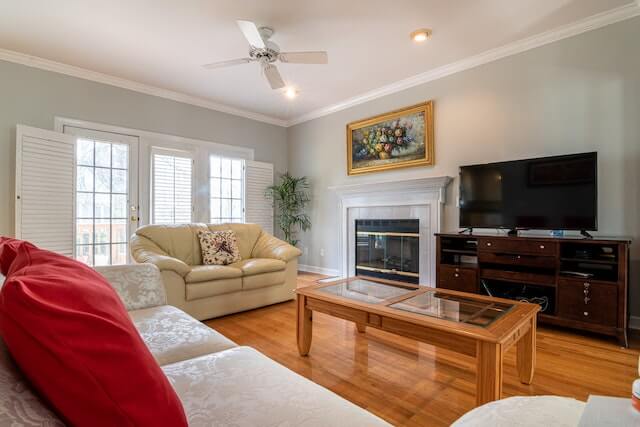
How to Soundproof Basement Room Windows Basement windows are often overlooked when it comes to noise reduction. They can be a major source of outside noise entering the room and interrupting your sleep or work.
Here are some elements of soundproofing a basement room Windows
- Install window inserts: These are thin plastic sheets that fit over the window, creating an additional barrier between you and outside noise. They’re not very expensive to purchase and easy to install.
- Replace single-pane windows with double-pane equivalents: The thicker glass will provide better soundproofing than a single-pane window.
- Seal gaps along windows with a acoustic Sealants or Caulk: There are a variety of acoustic sealants on the market that will help reduce the amount of outside sound coming into your room.
- Install storm windows: These can be installed over your existing windows to block out more noise than regular window inserts or double-pane windows alone.
- Hang sound-dampening Noise Reducing Curtains to block sound: The curtains will reduce the amount of sound that comes into your room and help block out noise from outside.
- Install double-cell shades: The cell shades will help block out noise from outside and reduce the amount of sound that comes into your room.
- Install drapes: Drapes can be hung over windows to help block out more noise than regular window inserts or double-pane windows alone.
- Window Foam: Window foam is a type of soundproofing material that can be installed over your existing windows to block out more noise than regular window inserts or double-pane windows alone.
- Interior Acrylic or Glass Sheet: This type of sheeting can be installed over your existing windows to block out more noise than regular window inserts or double-pane windows alone.
- External Storm Windows: Storm windows are a type of window that can be installed over your existing windows to block out more noise than regular window inserts or double-pane windows alone.
- Noise Reducing Blinds or Shutters: These are a type of window coverings that can be installed over your existing windows to block out more noise than regular window inserts or double-pane windows alone.
- Soundproofing with Furniture: You can use furniture to make your home more soundproof. Using heavy, dense furniture like wood can help block out some noise, as does filling any empty spaces with large items like bookshelves.
- Self-Adhesive Foam Seal Strip: This is a thin strip of foam that you can use to seal cracks and gaps in your walls. It’s easy to apply, inexpensive and can help reduce noise from outside.
- Vinyl sound barrier with mass loading: These are sheets of material that are designed to block sound. You can use them to line your walls and floors, or hang them from the ceiling or around a room. Mass loaded vinyl works by absorbing and dissipating sound waves as they enter your home.
- Carbon Absorption Panel: These are thin sheets of carbon that you can use as a sound barrier. They’re very thin, so they won’t take up much space, but they can help block some noise.
- Exterior Barriers: Another option for blocking out noise from outside is to put up exterior barriers like fences, landscaping, or even just plants and trees. Planting shrubs or trees close to the house can help reduce some of the noise from outside. Adding a fence or wall around your property can also help block some sound.
Recommended reading:Acoustical Society Of America
4Final Thoughts

Soundproofing your basement is an important step to ensuring you have a comfortable, quiet space that can be used for a variety of activities.
Whether you're looking to turn your basement into a home theater, music studio, or just a place to relax and unwind, soundproofing is essential.
By taking the time to soundproof your basement, you can significantly reduce the amount of noise from outside sources.
There are many different ways to soundproof a basement room, ranging from inexpensive DIY methods to more expensive professional solutions.
While it's possible to soundproof your entire basement in one go, it's often more cost effective to tackle the project in stages, focusing on one area at a time.
The steps outlined in this article will help you make sure that all areas of your basement are adequately soundproofed.
Additionally, by using the pro tips included throughout the article, you'll be able to save money while still achieving great results. So don't wait any longer - start soundproofing your basement today!
5FAQS
How Much Soundproofing Do You Need?
Generally, the more soundproofing you have, the better the sound quality in the room will be. Depending on the size of your basement, how close the neighbors are, and what type of noise you want to block out, you might need to add more insulation, sound barriers, or other materials like carpets, acoustic foam, and heavy curtains. The best way to determine the level of soundproofing you need is by testing out different materials in different combinations until you find one that works for you.
Are Soundproof Windows Necessary?
It depends on the amount of noise that needs to be blocked out. If your basement is near a busy street or noisy neighborhood, then soundproof windows may be necessary in order to keep the noise out of the basement.
How Does Sound Travel in Your Basement?
Sound travels differently in basements than it does above ground due to the enclosed space and lack of airflow. This can cause sounds from outside to seem amplified inside the basement, making it more important to create an effective soundproof barrier between the two spaces.
What Is the Best Material for Soundproofing?
There is no single material that can provide total soundproofing, but there are several good options that can help reduce sound transmission. Materials such as mass loaded vinyl, rubber floor mats, Green Glue compound, and mineral wool are all effective when used together.
Should You Buy a New Door?
In some cases, you may need to buy a new door in order to achieve total soundproofing. A solid core door can provide more sound insulation than hollow-core doors, and you can also add additional soundproofing materials around the edges of the door for even more protection. If you're looking for an even higher level of soundproofing, you can look into acoustic doors, which are designed specifically for soundproofing.
Does soundproofing a floor work?
Soundproofing floors is definitely an option, but it can be a bit more complex than soundproofing walls or ceilings. Generally speaking, you'll need to lay down some kind of acoustic insulation underneath the flooring, such as mineral wool or rubber mats. You can also add mass loaded vinyl mats or acoustic foam panels to the walls or ceiling in order to further reduce the transmission of noise. The best way to determine the most effective soundproofing materials for your particular basement is by consulting with an experienced contractor.
How can I make my windows soundproof cheaply?
One of the easiest and cheapest ways to soundproof your windows is by using a heavy fabric curtain over them. These curtains come in a variety of styles, colors, and thicknesses so you can choose one that fits the aesthetic of your basement while still providing sufficient noise reduction. If the curtain doesn’t quite do enough, adding an extra layer of plastic window film over it can help further reduce any unwanted noise. Additionally, if you don’t want to install window treatments, you can place acoustic foam or cork tiles directly over the window itself to absorb sound.
Can walls be soundproofed cheaply?
One of the most cost-effective ways to soundproof walls is through the use of mass loaded vinyl (MLV). MLV is a dense material that effectively blocks out exterior noises without needing to install costly insulation.
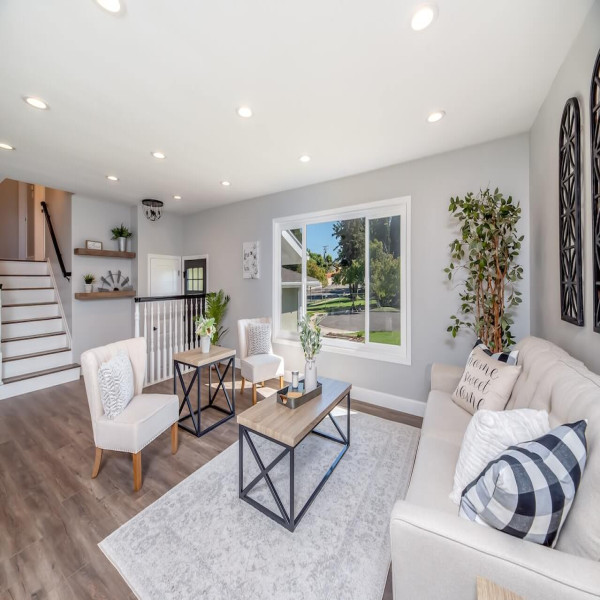



 Pro Tip
Pro Tip






